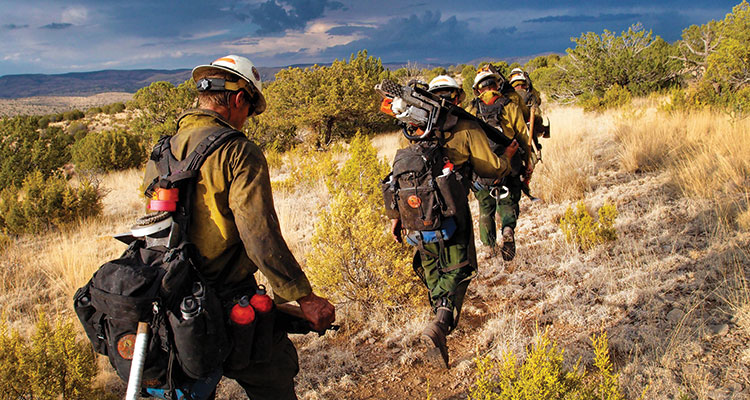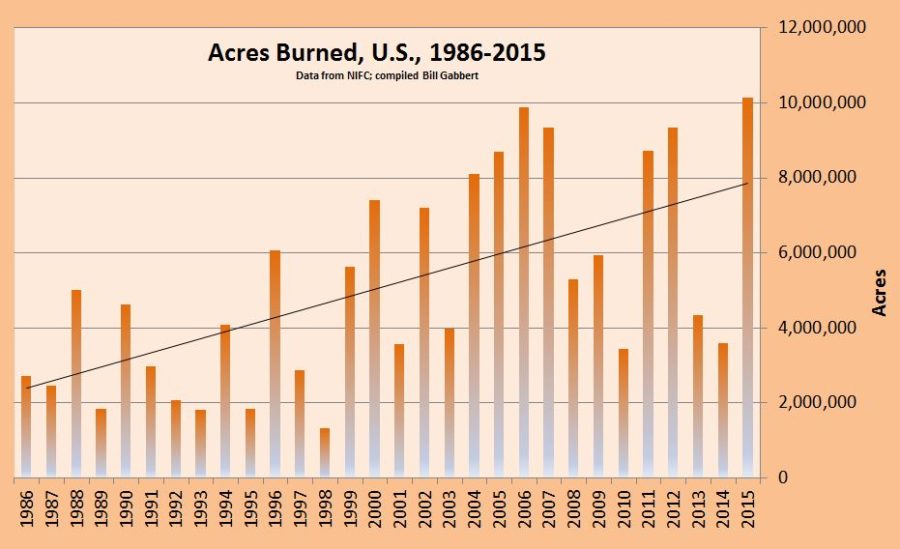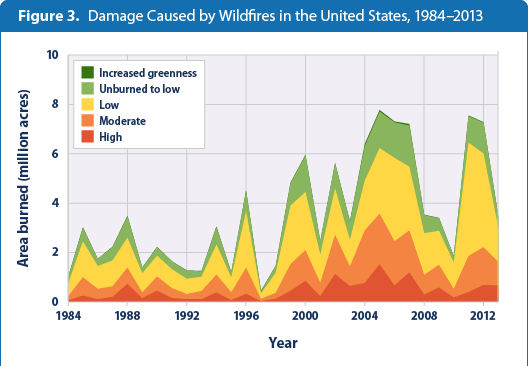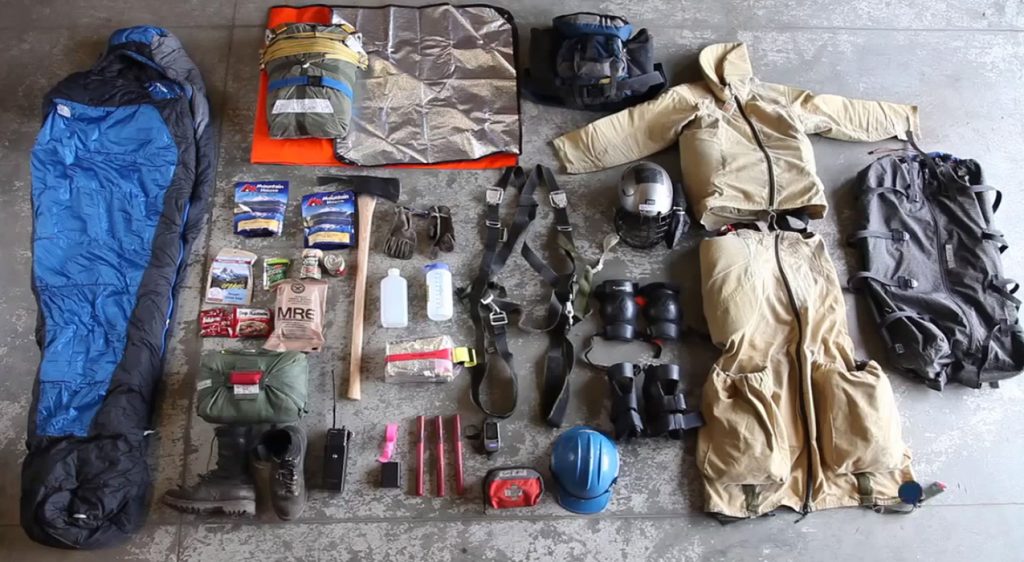
Veterans Wanted for Wildland Firefighting
By Charles Bausman
Veterans coming home from service during a period of war have nearly always experienced issues in re-assimilating in to the civilian world, where the a sense of purpose and camaraderie can be hard to find.
So, where might a twenty-three year old (or thirty-three year old) vet find those same motivating factors here at home? Multiple federal and state agencies tasked with wildland fire management are looking for veterans to fill their ranks.
Wildland Fire Fighting
The average number of wildfires has increased from 140 per season in the 1980’s, to over 250 per season in the past ten years. With hotter summers and a more rapid snowpack melt, the average fire season length has increased to seven months, compared to five months in the 1970’s.


For those who have lived in the western half of the country, the threat of wild fires is all too familiar. Whether it’s a summer day ruined by smoke or flames rapidly approaching private property, the size and frequency of wildfires is undoubtedly increasing.
With this increase in fires, creates a demand for more wildland fire fighters. Several organizations have recognized the untapped resource of the veteran pool, and are actively seeking to recruit vets to fight fire.
Kinds of Crews, What You’ll Do, and Pay

There are multiple kinds of crews with varying responsibilities and levels of experience. Below is a brief explanation of the different crews and and what they do in suppressing wildfires.
Hand Crew
18-20 Man crew constructing fire lines with hand tools and chainsaws, burning out areas using drip torches and other firing devices, and mop-up and rehabilitation of burned areas.
Fuels Crew
Responsible for thinning timber, woodlands, or shrubs with chainsaws with hand tools and chainsaws. Can also utilize chemicals to reduce fuel sources, monitoring pre and post fire effects, and fire suppression on occasion.
Engine Crew
3-10 man crew, responsible for initial and extended attack fire suppression with wildland fire engines, laying hose and constructing fire lines. Can be used for burnout operations and mopping up operations.
Hotshot Crew
20 person crew utilized for similar responsibilities as hand crews, but in far more rugged terrain and difficult areas of the fire. Generally require some wildfire experience and a higher level of fitness.
Helitack Crew
Delivered to fires via helicopter to suppress wildfires with hand tools and chainsaws. The helicopters may be equipped with aerially delivered fire retardant and provide logistical support. May be required to insert firefighting crews via rappelling in hard to reach areas. Crews generally consist of 7 to 10 men.
SmokeJumper
Provide a aerial insertion method for firefighters via parachute to provide fire suppression and hazardous fuels reduction. Provides a long range and rapid response for land management agencies. Requires previous wildland firefighting experience for entry on to a smokejumper team.
Fitness Requirements
Wildland firefighting is a physically challenging job, and fitness requirements for employment on a crew reflects. All candidates are required to conduct a Pack Test, requiring you to walk three miles in forty-five minutes with a forty-five pound pack. While generally conducted on a flat course, some crews may require the test to be conducted on more challenging terrain.
Many crews will hike several miles to the fire and begin to dig line or remove fuels (wood and timber) immediately. The physical endurance required is significant and you should be well prepared to work all day in rough conditions.
Check out our Wildland Fire Training Programs to get you in the right shape for the job.
Hours and Salary
The hours on a fire are long, up to 16 to 20 hours while actively suppressing or mopping up a fire. This can be for as short as a few days, to multiple weeks.
Most federal agencies will recruit at the GS-3 to GS-5 rate for new fire recruits, ranging between $10/hr to $15/hr. While the hourly rate may seem the low, the overtime pay is where wildland firefighters are able to cash in. Overtime is dependent on the number and duration of fires and impossible to predict, but your take home pay at the end of the fire season can be between $30,000 and $40,000 during a active season.
Benefits of these long hours add up for a good chunk of money at the end of a season, with food and housing often provided for. With your expenses at a minimum, you can walk away with a good chunk of cash for a summers worth of work.
Veteran Recruiting Resources
The following agencies are actively seeking veterans for wildland firefighting positions. The common theme of leadership and physical toughness developed in the military are attributes that departments seek. These programs will provide the training required to become a wildland firefighter, and develop excellent contacts for potential full time employment. You are also able to utilize your GI Bill benefits to supplement your income while in training, providing financial stability while learning the trade.
New Mexico Returning Heroes Wildland Firefighter Program
Wildland Firefighter Apprenticeship Program
SCA Veterans Fire Corps
Montana Veteran Green Corps
California Conservation Corps Veterans Program
BLM Veterans Fire Crew
Southwest Conservation Corps – Veterans Fire Corps
If already qualified or have experience in wildland firefighting, USAjobs.com has several veteran hiring preferences which you can utilize to move you to the top of the hiring list. The agencies listed below will give you a start on where and when to look for wildland fire employment.
Hiring Agencies
Nearly all of the federal agencies listed below utilize USAjobs.com job postings and hiring. This requires you to build a profile and build your resume on the website in order to apply for any jobs. Most departments begin posting vacancies in December and January for the following fire season, so be proactive in getting your account set up!
Department of Interior – The DoI is responsible for the varying agencies which provide wildland fire suppression units. Click on this link for a map which will display state by state units and how to apply via USAjobs.com
Bureau of Land Management – Click on link for the BLM Wildland Fire recruiting page
US Forest Service – Click link for USFS recruiting page. Click here for additional information and videos on what wildland fire operations look like.
National Park Service – Click link for NPS Wildland Fire jobs page. Click here for NPS brochure which further explains requirements of the job.
US Fish and Wildlife Service – Click link for FWS job page and hiring information.
Below are links to states and their respective departments which employ wild land fire fighters:
Washington state
Oregon
California
New Mexico
Colorado
Wyoming
Idaho
Montana
Alaska
These programs offer a excellent opportunity for transitioning veterans seeking hard, but rewarding work. Get to work early on job searching and applications, as wildland firefighter positions go quickly. With the veteran resources available, you can get ahead and find yourself deep in the forest in some of the most beautiful landscape in the country. You will certainly work hard, but you’ll stand alongside like-minded individuals in a dangerous and rewarding job. Good luck!
Sources
http://www.ucsusa.org/global_warming/science_and_impacts/impacts/infographic-wildfires-climate-change.html#.WAkOiZMrJcA
www.wildfirex.com
www.federalpay.org